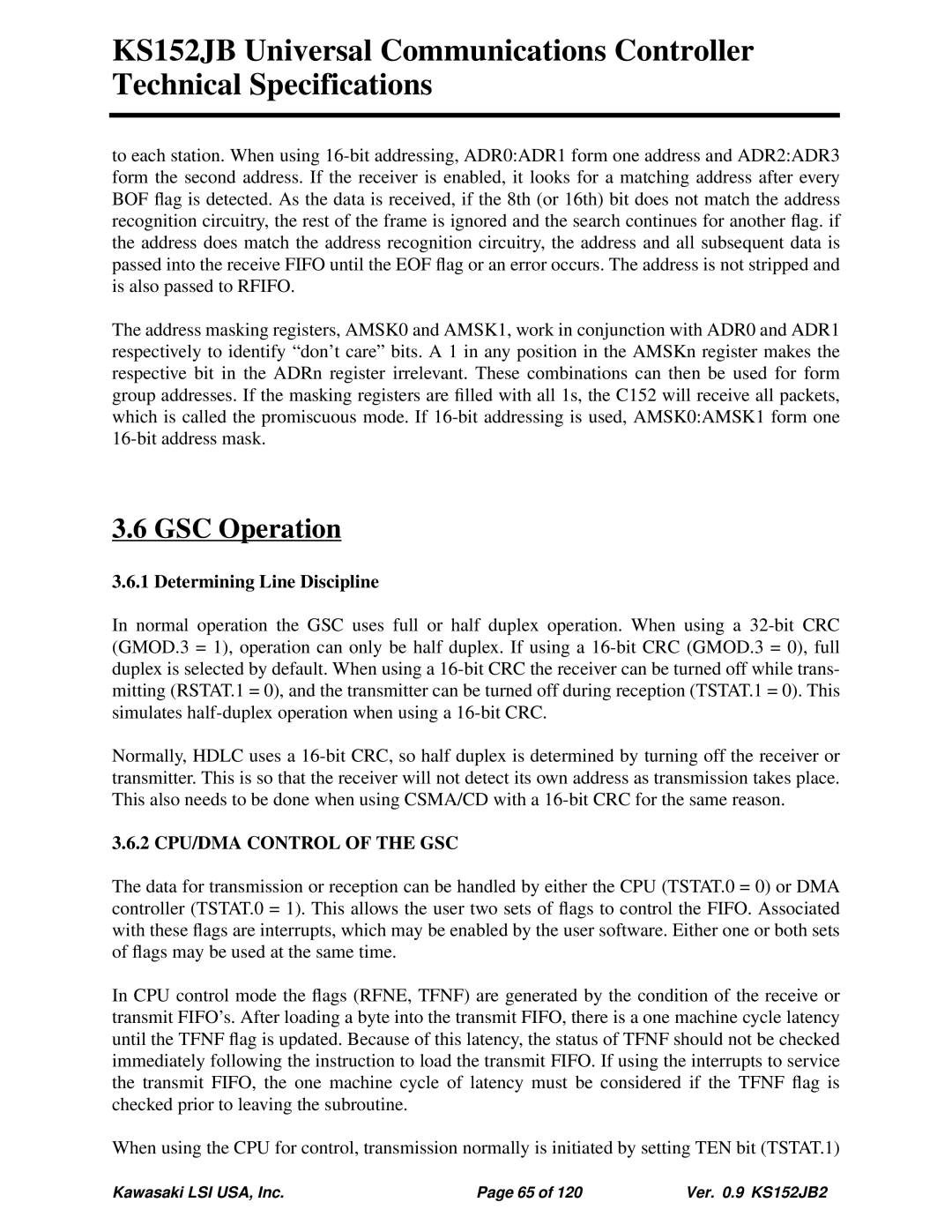KS152JB Universal Communications Controller Technical Specifications
to each station. When using
The address masking registers, AMSK0 and AMSK1, work in conjunction with ADR0 and ADR1 respectively to identify “don’t care” bits. A 1 in any position in the AMSKn register makes the respective bit in the ADRn register irrelevant. These combinations can then be used for form group addresses. If the masking registers are filled with all 1s, the C152 will receive all packets, which is called the promiscuous mode. If
3.6 GSC Operation
3.6.1 Determining Line Discipline
In normal operation the GSC uses full or half duplex operation. When using a
Normally, HDLC uses a
3.6.2 CPU/DMA CONTROL OF THE GSC
The data for transmission or reception can be handled by either the CPU (TSTAT.0 = 0) or DMA controller (TSTAT.0 = 1). This allows the user two sets of flags to control the FIFO. Associated with these flags are interrupts, which may be enabled by the user software. Either one or both sets of flags may be used at the same time.
In CPU control mode the flags (RFNE, TFNF) are generated by the condition of the receive or transmit FIFO’s. After loading a byte into the transmit FIFO, there is a one machine cycle latency until the TFNF flag is updated. Because of this latency, the status of TFNF should not be checked immediately following the instruction to load the transmit FIFO. If using the interrupts to service the transmit FIFO, the one machine cycle of latency must be considered if the TFNF flag is checked prior to leaving the subroutine.
When using the CPU for control, transmission normally is initiated by setting TEN bit (TSTAT.1)
Kawasaki LSI USA, Inc. | Page 65 of 120 | Ver. 0.9 KS152JB2 |
